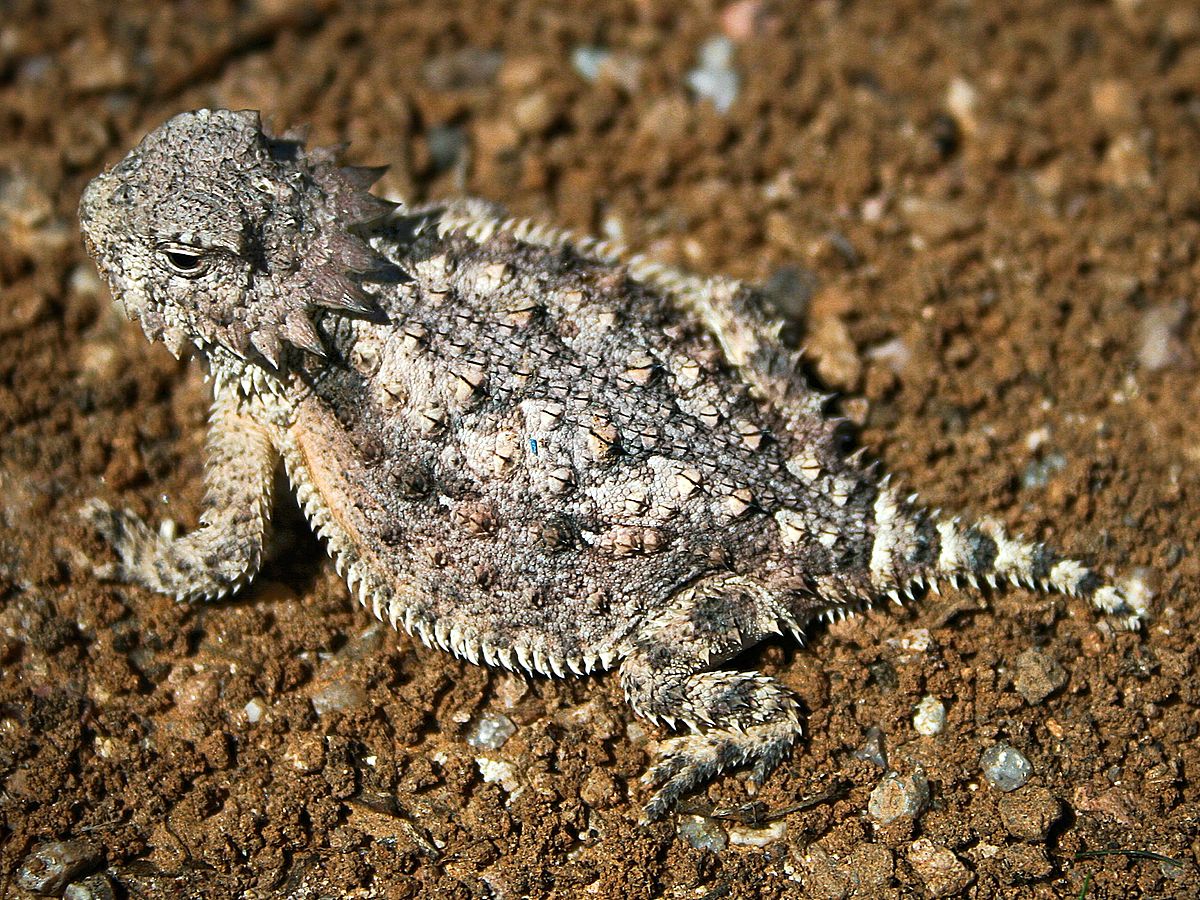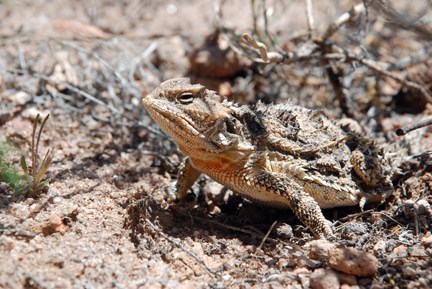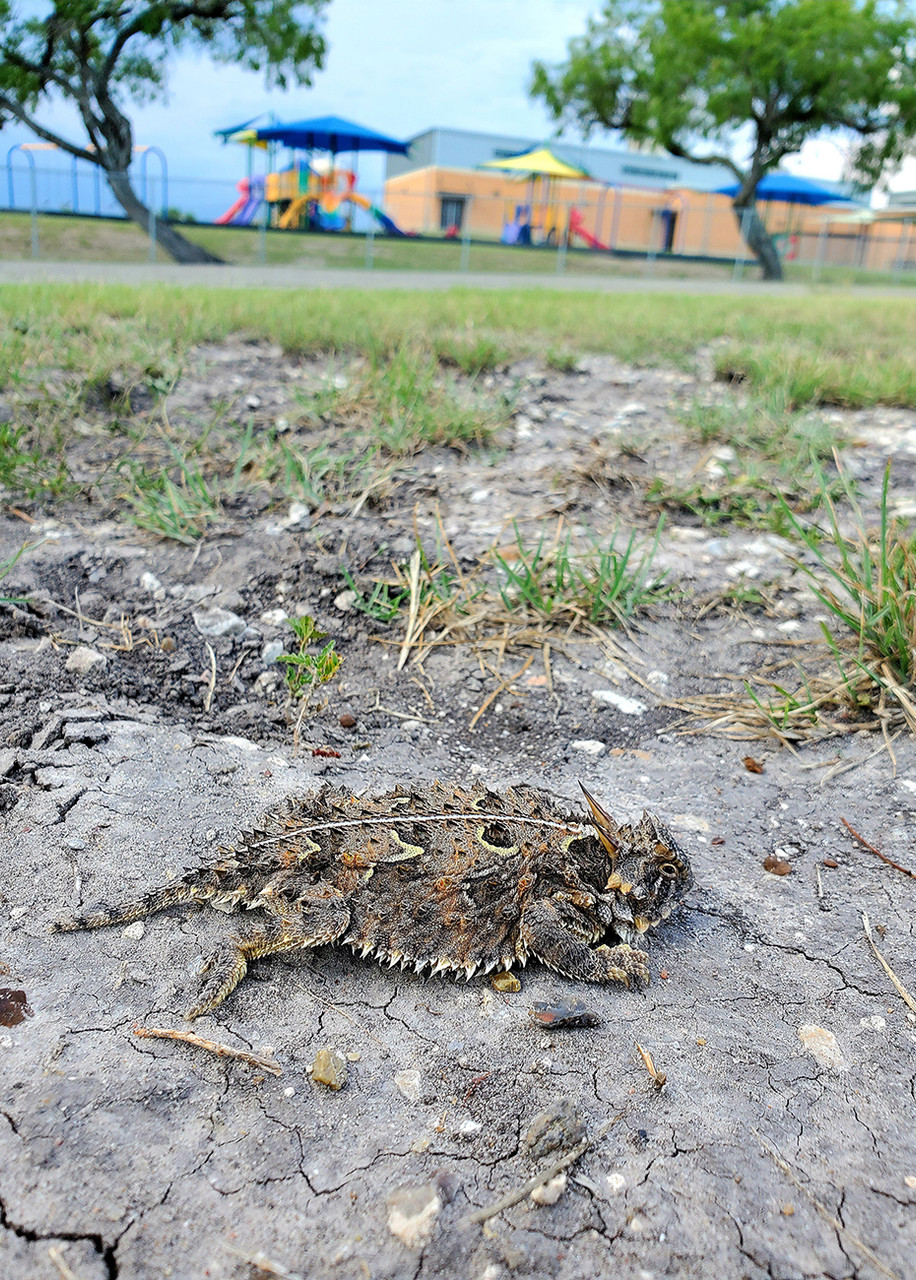Do You Know? The Blood-Shooting Marvel of the Desert: The North American Horned Lizard
The Blood-Squirting Phenomenon
Imagine a creature so bizarre that it can shoot blood from its eyes as a defense mechanism. The North American horned lizard, or Phrynosoma, has this incredible ability. When threatened, these lizards increase blood pressure until tiny vessels around their eyes rupture, shooting a stream of blood up to 5 feet (1.5 meters). This blood is toxic and has a foul taste, effectively deterring canine and feline predators. Scientists have confirmed the mechanics behind this process, showing that the compounds in the blood are naturally part of their circulatory system, not added from external glands.

Image Source: Wikipedia
Habitat and Camouflage
Horned lizards are primarily found in arid and semi-arid environments across North America. Their coloration allows them to blend seamlessly into their surroundings, making them nearly invisible to predators. They can also flatten their bodies to avoid detection, further enhancing their camouflage. These adaptations are crucial for their survival in harsh desert landscapes.
Specialized Diet and Predation
Horned lizards are ant-eating specialists, consuming anywhere from 30 to over 100 ants per day. Their diet is highly specialized, relying on native ants for their nutritional needs. However, invasive fire ants pose a significant threat, as horned lizards do not eat them. In addition to their blood-squirting defense, these lizards can puff up their bodies to appear larger and more intimidating, and they often remain motionless to avoid detection.

Image Source: National Park Service
Conservation and Cultural Significance
Horned lizards face numerous threats, including habitat destruction, the introduction of non-native species, and predation by domestic pets. The Texas horned lizard, for example, is notably absent from nearly half of its historical range. Despite these challenges, the Texas horned lizard holds cultural significance as the official state reptile of Texas. Events like the “Horned Toad Derby” celebrate this unique creature, highlighting its importance in local ecology and culture.
Myth vs. Reality
A common misconception is that horned lizards use blood-squirting against all predators. In reality, this defense is most effective against canine and feline predators, while it may not significantly deter avian predators. Scientific studies have confirmed the evolutionary advantages of this adaptation, showing that it increases survival rates after encounters with certain predators.
Interesting Facts
Horned lizards have several fascinating traits. Their horns are true horns with a bony core, and they lack a urinary bladder, absorbing moisture directly from their environment. They can change their coloration to enhance camouflage and puff up their bodies to appear larger. Despite their unique adaptations, horned lizards have a low survival rate in captivity due to their specialized dietary needs.
Countries
United States, Mexico
References:
Horned lizard – Wikipedia – link
Short-Horned Lizard – Bandelier National Monument – link
Categories: Conservation, Do you know, Nature, Wildlife
Tags: Animal Defense Mechanisms, Conservation, Desert Wildlife, Horned Lizard, North American Fauna
Religion: N/A
Country of Origin: Mexico, United States
Topic: Wildlife
Ethnicity: N/A



Your point of view caught my eye and was very interesting. Thanks. I have a question for you.